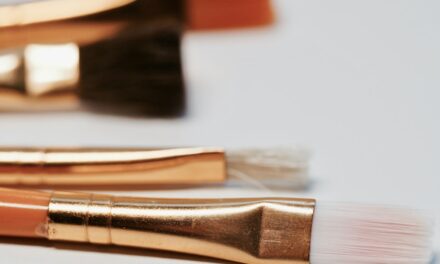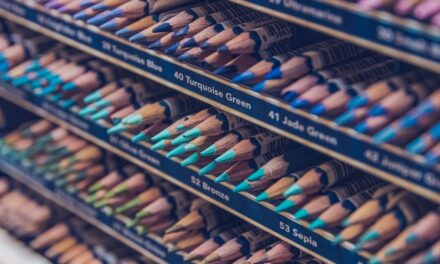Mixed media portraits represent a fascinating intersection of traditional and contemporary artistic practices, allowing artists to explore the human form through a diverse array of materials and techniques. This innovative approach transcends the limitations of conventional portraiture, inviting a dialogue between various mediums such as paint, paper, fabric, and found objects. The beauty of mixed media lies in its ability to convey complex emotions and narratives, often reflecting the multifaceted nature of identity itself.
The allure of mixed media portraits is rooted in their capacity to challenge the viewer’s perception of what a portrait can be. By integrating various elements, artists can evoke a sense of depth and dimensionality that traditional painting may struggle to achieve.
This genre encourages a playful exploration of form and colour, allowing for an expressive freedom that can lead to unexpected results. As we delve deeper into the techniques and materials that define mixed media portraiture, we will uncover the myriad ways in which artists can breathe life into their subjects, creating works that resonate on both an emotional and intellectual level.
Summary
- Mixed media portraits combine different art materials and techniques to create unique and dynamic artwork.
- Layering techniques with paint add depth and texture to mixed media portraits, allowing for a more visually interesting piece.
- Incorporating paper into mixed media portraits can add dimension and contrast, creating a more tactile and visually stimulating artwork.
- Using text in mixed media portraits can add depth and meaning, allowing the artist to convey a message or tell a story through their artwork.
- Tips for creating dynamic mixed media portraits include experimenting with different materials, embracing imperfections, and allowing the artwork to evolve organically.
Exploring Layering Techniques with Paint
Layering is a fundamental technique in mixed media portraiture that adds depth and complexity to the artwork. By applying multiple layers of paint, artists can create a sense of dimension that draws the viewer into the piece. This process often begins with an underpainting, where a base layer is established using broad strokes and muted colours.
This initial layer serves as a foundation upon which subsequent layers can be built, allowing for greater control over the final composition. As each layer is added, artists can manipulate colour and texture, creating a rich tapestry that enhances the overall impact of the portrait. One effective method for layering involves the use of glazing techniques, where transparent layers of paint are applied over dried layers.
This approach allows for subtle shifts in colour and tone, resulting in a luminous quality that can bring skin tones to life or create atmospheric effects.
The interplay between these techniques can lead to dynamic contrasts within the portrait, highlighting specific features while allowing others to recede into the background.
Ultimately, mastering layering techniques is essential for any artist looking to elevate their mixed media portraits.
Incorporating Paper into Mixed Media Portraits
The incorporation of paper into mixed media portraits opens up a world of possibilities for texture and visual interest. Artists can utilise various types of paper—such as tissue, newsprint, or handmade paper—to add layers of complexity to their work. By collaging pieces of paper onto the canvas, artists can create unique patterns and shapes that enhance the overall composition.
This technique not only adds visual intrigue but also allows for the exploration of themes such as memory and identity, as different papers can evoke specific associations or emotions. In addition to traditional collage methods, artists can experiment with techniques such as paper tearing or cutting to create intricate designs that interact with painted elements. For instance, torn edges can introduce a sense of spontaneity and movement, while precise cuts can lend an air of sophistication to the piece.
Furthermore, incorporating text or imagery from magazines or books can provide additional layers of meaning, inviting viewers to engage with the work on a deeper level. By thoughtfully integrating paper into their portraits, artists can create multifaceted narratives that resonate with their audience.
Using Text to Add Depth and Meaning to Portraits
Text is a powerful tool in mixed media portraiture, offering an opportunity to infuse works with personal narratives or broader social commentary. By incorporating words or phrases into their compositions, artists can provide context or provoke thought, inviting viewers to consider the stories behind the faces depicted. Text can be applied in various ways—handwritten notes, printed letters, or even stencilled phrases—each method contributing its own unique character to the artwork.
The strategic placement of text within a portrait can also influence the viewer’s interpretation. For example, words that surround or frame the subject may suggest an internal dialogue or external influences shaping their identity. Alternatively, text embedded within the figure itself can create a sense of unity between image and word, blurring the lines between visual representation and narrative content.
By thoughtfully integrating text into their mixed media portraits, artists can deepen the emotional resonance of their work while encouraging viewers to engage with the themes presented.
Tips for Creating Dynamic Mixed Media Portraits
Creating dynamic mixed media portraits requires a balance of experimentation and intention. One essential tip is to embrace spontaneity; allowing for unexpected outcomes can lead to exciting discoveries within your work. This might involve layering materials without a predetermined plan or allowing paint to drip and blend in unpredictable ways.
Such moments of serendipity often yield unique textures and forms that can enhance the overall composition. Another important consideration is colour harmony. While mixed media allows for a diverse palette, maintaining a cohesive colour scheme can unify disparate elements within the portrait.
Artists should consider how colours interact with one another and how they contribute to the overall mood of the piece. Additionally, varying the scale and placement of different materials can create visual interest; larger elements may draw attention while smaller details invite closer inspection. By thoughtfully combining these strategies, artists can craft mixed media portraits that are not only visually captivating but also rich in narrative depth.
Examples of Mixed Media Portraits
The Innovative Approach of Robert Rauschenberg
One notable example is Robert Rauschenberg, whose “Combines” seamlessly blend painting and sculpture with found objects and photographs. His innovative approach redefined portraiture by incorporating everyday materials, inviting viewers to reconsider the boundaries between art and life.
Kehinde Wiley: Challenging Stereotypes
Another prominent figure in mixed media portraiture is Kehinde Wiley, known for his vibrant depictions of African American subjects set against ornate backgrounds inspired by classical portraiture. Wiley’s work often incorporates elements such as textiles and patterns that reflect cultural heritage while simultaneously challenging stereotypes associated with race and identity.
Mixed Media: Conveying Complex Narratives
These examples illustrate how mixed media techniques can be employed to convey complex narratives while pushing the boundaries of traditional portraiture.
Tools and Materials for Mixed Media Portraits
To embark on your journey into mixed media portraiture, it is essential to gather a diverse array of tools and materials that will facilitate your creative process. A sturdy canvas or wooden panel serves as an excellent foundation for your work, providing stability for layering various elements. Acrylic paints are particularly well-suited for mixed media due to their quick drying time and versatility; they can be easily combined with other materials without compromising adhesion.
In addition to paint, consider incorporating a variety of papers—such as scrapbook paper, tissue paper, or even old book pages—into your portraits. Adhesives like gel medium or Mod Podge are invaluable for collaging these materials onto your canvas while ensuring durability. Tools such as brushes, palette knives, and sponges will allow you to manipulate paint effectively, while stencils or stamps can introduce intricate designs or text into your work.
By assembling a well-rounded toolkit, you will be well-equipped to explore the limitless possibilities of mixed media portraiture.
Conclusion and Inspiration for Your Next Project
As we conclude our exploration of mixed media portraits, it becomes evident that this genre offers an exciting avenue for artistic expression and experimentation. The interplay between various materials and techniques allows artists to create works that are not only visually stunning but also rich in narrative depth. Whether through layering paint, incorporating paper elements, or integrating text, each artist has the opportunity to craft unique stories that resonate with viewers on multiple levels.
As you embark on your next mixed media portrait project, remember to embrace creativity and spontaneity while remaining open to new ideas and techniques. Allow yourself the freedom to explore different materials and approaches; you may discover unexpected connections that enrich your work in ways you never anticipated. Ultimately, mixed media portraiture invites us all to reflect on our identities and experiences while celebrating the beauty of diversity in artistic expression.
So gather your tools, unleash your imagination, and let your creativity flow as you embark on this exciting artistic journey!
If you are interested in exploring different art techniques, you may also enjoy reading about an introduction to the art technique of pointillism. This technique involves creating images using small, distinct dots of colour. Another fascinating art technique to learn about is the repousse and chasing technique, which involves shaping metal into intricate designs. For more artistic inspiration, check out the article on visionary vibes.


